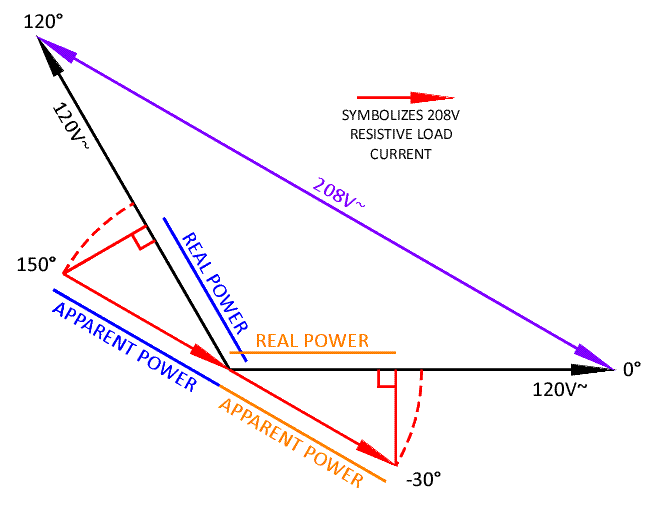Not so.That line should read, "If you measure power factor using Line to Line voltage as the reference, then Line-to-Neutral resistive loads will have the .87 power factor...???"
The current in the L-N resistive load will be out of phase with the L-L voltage but that's not the voltage applied to the line to neutral load. L-N voltage is. And the current in the L-N load will be in phase with that giving unity (1.0) PF.


